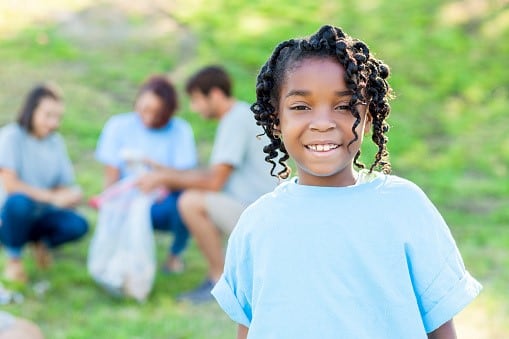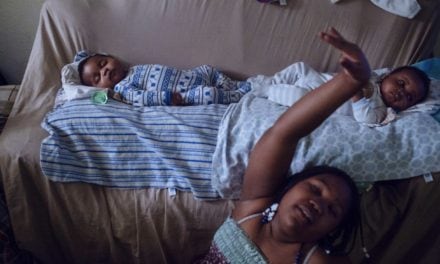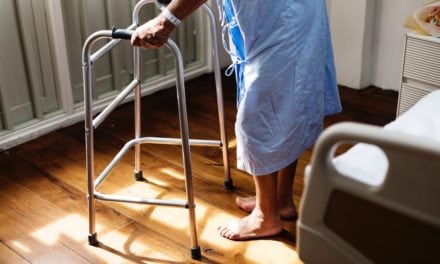If you’re are lucky enough to have a young woman in your life—whether it’s a daughter, niece or the little girl next door—it’s a great time to encourage her to love her natural hair and embrace her natural beauty.
In new research from childhood obesity expert and pediatrician Susan Woolford, MD, MPH at the University of Michigan’s C.S. Mott Children’s Hospital, her sister Carole Woolford-Hunt, PD, of Andrews University in Michigan and David Williams, PhD, of Harvard University looked into attitudes and the impact of resistance to exercise among black women because of a fear of ruining costly hairstyles with sweat.
Working with the knowledge that African American teens have lower levels of physical activity, the research team asked: Is physical activity in young black girls related to hair care?
While the authors acknowledged that their research sample was small (36 African American girls, ages 14 to 17, from three states), they found that certain research results were consistent across all study participants—teen girls preferred to have straightened hair. They considered it the most “attractive” style and they avoided doing anything that would get their hair wet—including exercise—because it would ruin their hairstyle.
Why does this matter? “We know that African-American children and women have a disproportionately high risk of obesity compared with their Caucasian peers. Interestingly, this difference becomes more apparent as girls get older. At ages 6 to 11, the obesity rates are more similar. But by adolescence there is a marked difference (about 14 percent versus 29 percent for African American girls),” Wooldforde said in an extensive University of Michigan Q & A session.
Obesity among adolescents cannot be dismissed as harmless baby fat. Obese teens are more likely to become obese adults and more likely to have health risks. A recent study of obese children, ages 5 to 17, showed that 70 percent were already showing signs of cardiovascular disease.
“My sister and co-investigator is a counseling psychologist and an expert in issues related to race and culture. We have often discussed the role that ethnic identity might play in obesity and physical activity, especially as it relates to hairstyle choices. Some people may be surprised that hairstyle concerns could potentially affect physical activity. But we got the opposite reaction from those who are familiar with this issue, such as my hairdresser who said, “Well, everyone knows that’s true. Why would you need to do a study to show that?”
Culture Adds Pressure
Woolforde and her team understand the potential weight of cultural pressures—created by media and other images promoting European standards of beauty as superior—that suggest straight hair is pretty hair and that naturally-styled African American hair is unattractive.
“Because of cultural pressure, many black women in America go to great lengths to relax and straighten their natural hair. Many popular hairstyles require hair weaving or some form of straightening process, which can be expensive, time consuming and reversed by exposure to moisture. Frizzy sections of hair are undesirable, and it is often socially unacceptable to let natural hair emerge.
There is also a perception among some that to be accepted in mainstream America—p articularly in corporate America—straighter hair is more appropriate than braided, locked or natural hair. There is also the possibility that in order to advance in some careers or to be socially accepted, having a look that mirrors the majority culture is helpful because the less different you are, the more comfortable others are around you. There’s sometimes a negative connotation placed on a very ethnic look.
Other studies have suggested that as many as 40 percent of adult black women have at one time avoided exercise because of concerns that it would ruin their hair,” Woolforde said
Woolforde’s team found that no matter what state the girls lived in, they had very consistent ideas about natural hair, though girls in Georgia were a more comfortable with natural hair than teens in California and Michigan. The girls said:
▪ When concerns about hairstyles began between ages 8 and 15, participants changed from juvenile (natural) styles to straightened styles.
▪ Participants avoided getting wet or sweating during exercise because their straightened hair became nappy.
▪ Braids with extensions and natural styles were viewed as better for exercise, but not viewed as attractive.
▪ Participants almost universally selected long, straight hairstyles as most attractive. Some thought short, natural hair was OK but that it “only looks good on some people.”
Woolforde added: “It’s important to note that while we found common themes through all focus groups, not every African-American adolescent feels this way. However, this issue does seem to be on the minds of many African-American teenage girls and warrants further exploration.
Ethnic identity has been shown to be related to lifestyle and hairstyle choices, so we measured it in this study. Something we hadn’t seen in the literature before was whether someone’s ethnic identity impacts physical activity, coupled with the idea that a stronger association with an ethnic group may make someone more comfortable with natural hair and therefore more willing to exercise.
Even in such a small sample, it was interesting to see an association between higher levels of ethnic identity and higher levels of reported physical activity. We also found an association between hairstyle choice and level of physical activity (measured by self-reported minutes of activity that increased heart rate, such as sports participation).”
Woolforde’s research suggests that the more comfortable our girls are with their culture and African American identity, the more likely they are to make fitness a priority and believe that their natural hair is a source of natural beauty.









